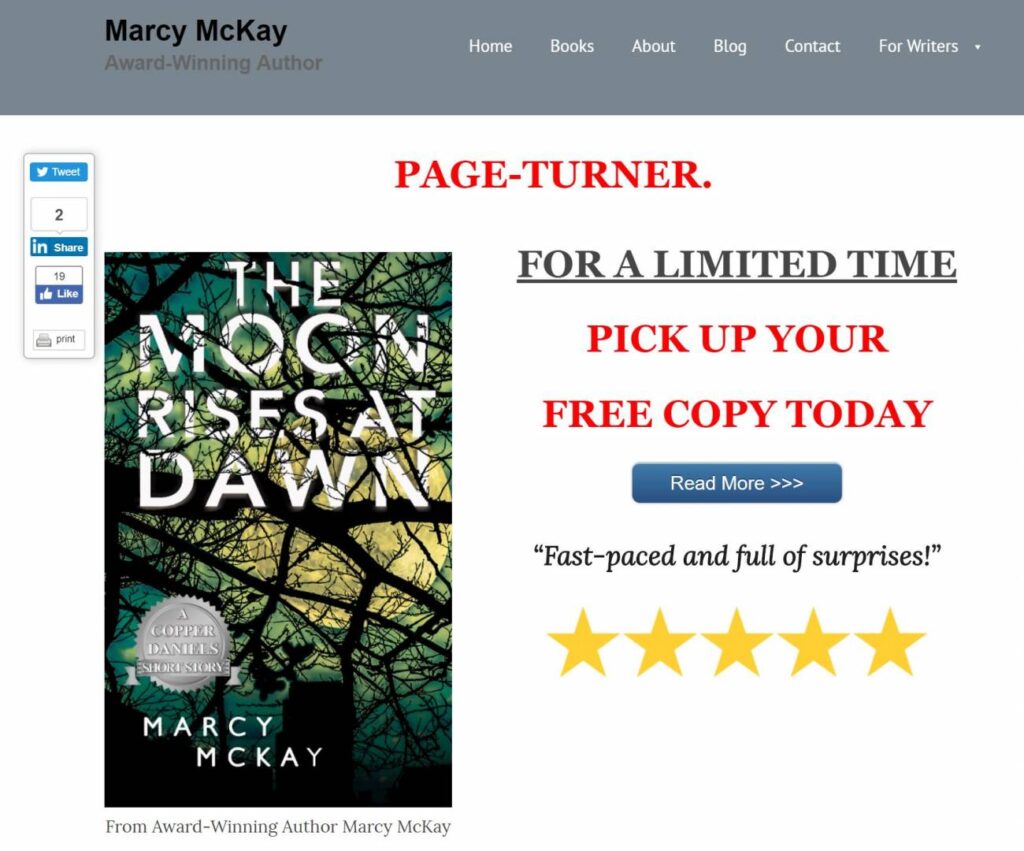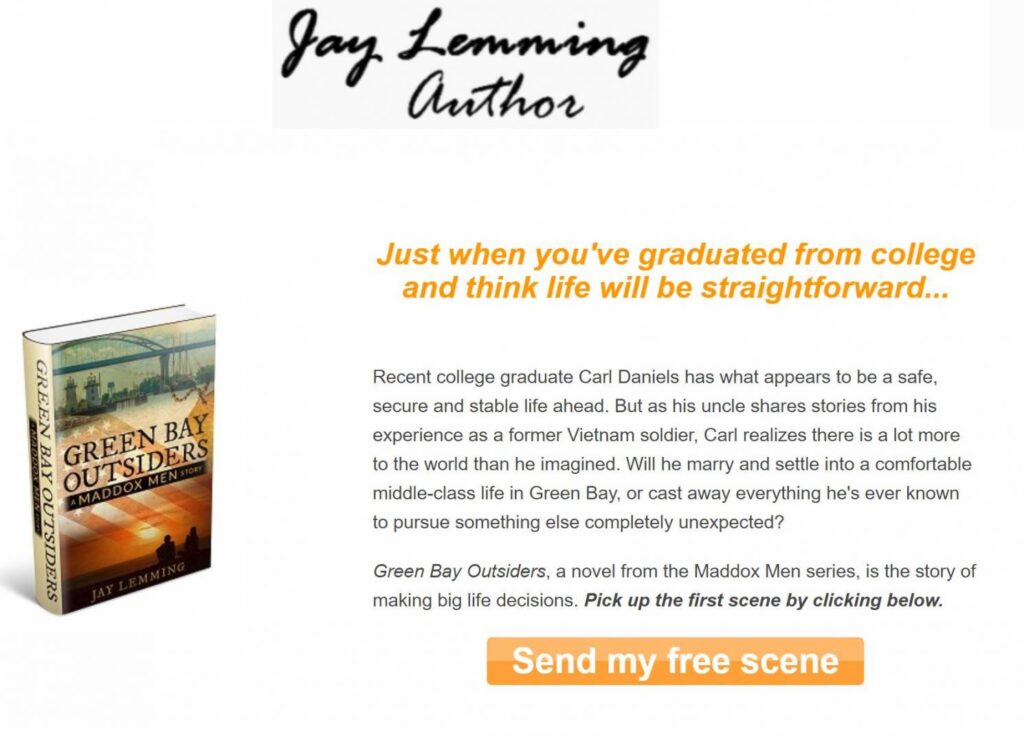
Jay Lemming explains the philosophy and practice of website landing pages
What exactly is a landing page and how does one distinguish it from a regular web page? What benefits do they offer indie authors keen to engage readers with their self-published books?
Jay Lemming, marketing professional by day, indie author by night, provides the answers with specific reference to the marketing needs of self-published authors.
The purpose of this post is to describe the purpose of a landing page, provide a few examples and explain the importance of developing one if you’re an indie author.
What is a Landing Page?
For starters, it is helpful to define a landing page. Technically, any web page is a landing page. It’s the page where someone “lands” when they click a link in an e-newsletter, a social post or a Google search page result.
Most web pages have links, photos, menus, videos, etc. When an indie author links a reader to such a page, the visitor can do many things.
But when an indie author wants their readers to take a particular action, such as download a free book, the best way to do that is to remove the above-mentioned distractions (the links, menus, etc.) from the page and leave a single choice of action. For example, you might include a bold button that reads: “Download my e-book now”.
Guiding reader behavior is the philosophy behind a strong landing page.
Here is the home page of author Marcy McKay. Although it has more elements than would appear on a pure landing page, the blue Read More button beside a large, bold book cover encourages readers to click it. There’s no doubt what the author wants readers to do and readers will likely respond.

For my work in progress, Green Bay Outsiders, I invite readers to download the first scene on this landing page.

Much has been written about what should and shouldn’t appear on a landing page (see these posts by Bookthority and Wishpond, for example) but most would consider a simple, visually friendly page with limited text and a clear call to action essential.
Why Landing Pages Are Important
Any indie author serious about developing a book business must invest in marketing campaigns with sales and lead generation goals. Advertising, network building, newsletter swaps, social media and other techniques build visibility.
But the rubber really meets the road when a reader “converts”, which means they do what you specifically want them to do to achieve your goals.
A regular web page with a lot of links won’t convert readers as well as a targeted landing page, so using them is essential.
How to Create A Landing Page
But how do you create a landing page? Indie authors can use Mailchimp, for example, which is typically thought of as an e-marketing tool, to build landing pages.
You might also consider providers of high-quality landing page services such as Lead Pages or OptimizePress, which offer templates with bells and whistles such as a video screen, or a countdown clock (the latter is great when building the registration page for an upcoming event).
Indie authors might balk at paying. But authors who understand the landing page as a critical part of their readers’ experience will see it as an investment.
Wrapping Up
A landing page is part technical, part philosophical:
- On the technical side, authors must strip away links or other information that become a distraction.
- The philosophical side is a recognition that effectively marketing your books in a way that encourages specific actions will, in turn, increase the likelihood of business success.
A landing page may just be a particular kind of web page but if you build it cleanly and in a way that creates excitement, you develop a sure-fire way to get more customers faster than ever before.
JOIN THE CONVERSATION
How has adding landing pages to your website improved your success? We'd love to hear your case studies.
OTHER POSTS TO HELP YOU MAKE THE MOST OF YOUR AUTHOR WEBSITE





This was so helpful! Thanks!
Brilliant article, would be interesting to see if i can use your advice
Thank you for the information, Jay! I didn’t know what a landing page was until you explained it. (rueful grin)